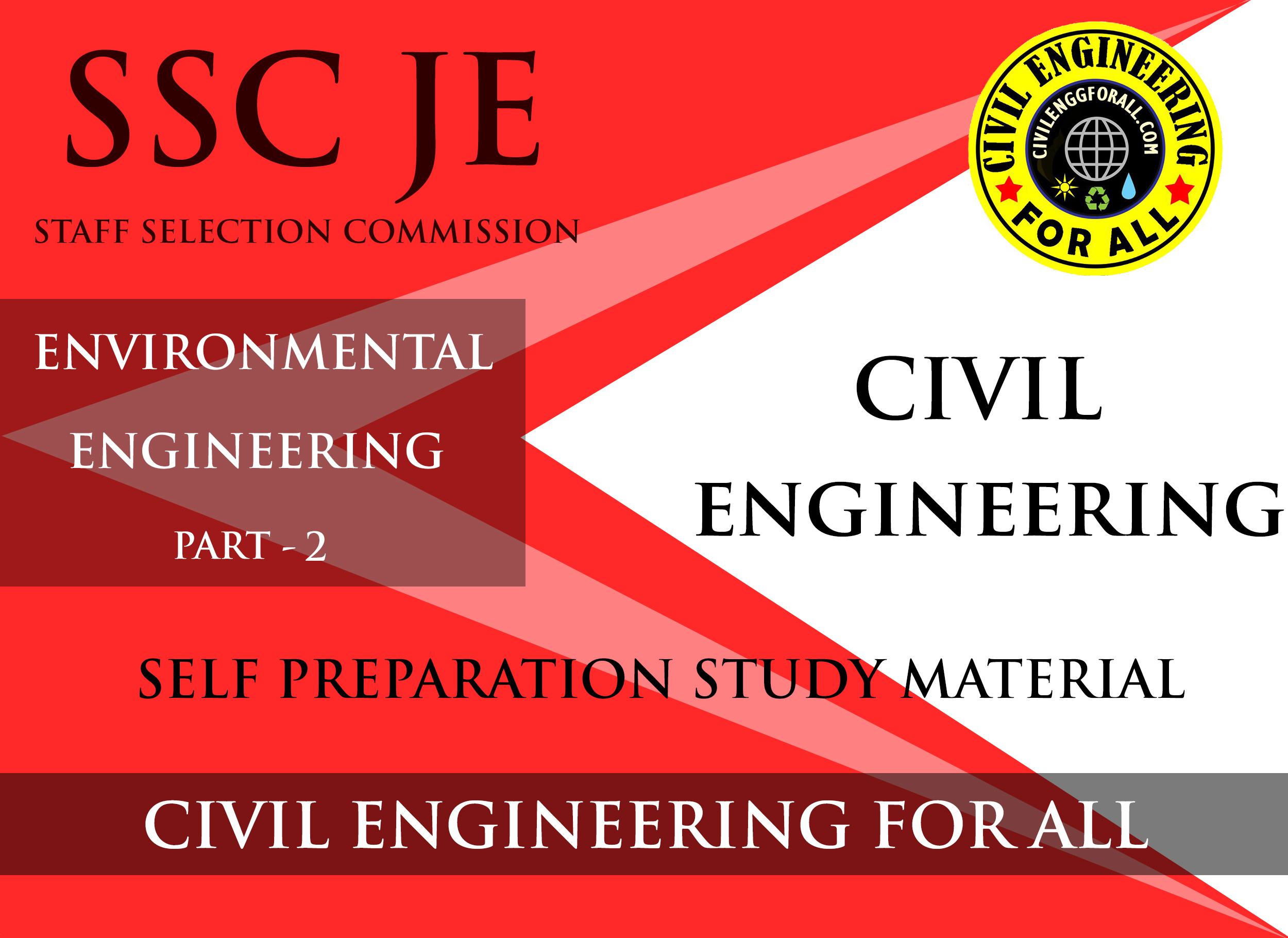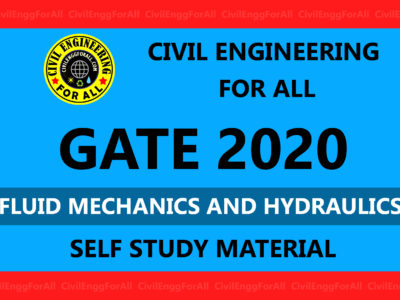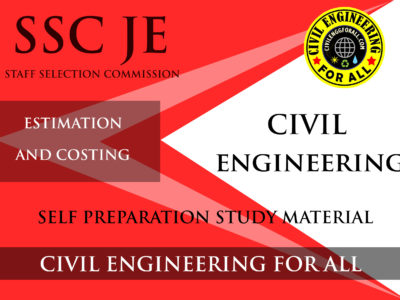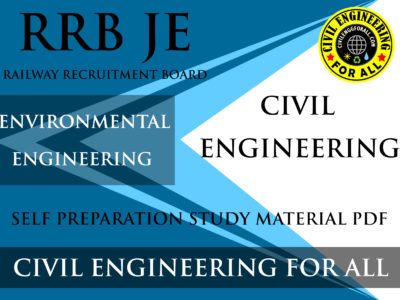
CONTENTS
SOLVED PROBLEMS, EXERCISES, SOLUTIONS, HINTS AND EXPLANATIONS OF THE BELOW TOPICS
- Water Demand
- Fire Demand
- Per Capita Demand
- Water Supply Scheme
- Design Periods & Population Forecasts
- Sources of Water
- Precipitations
- Rainfall And It’s Distribution
- Estimating Run-off And Yield of A Basin.
- Surface Sources Of Water Supplies
- Subsurface or Underground Water Sources
- Development of Ground Water
- Aquifers
- Groundwater Specific Yield
- Intake For Collecting Surface Water
- Conduits For Transporting Water
- Flows In Pipe Systems
- Analysis of Complex Pipe Networks
- Forces Acting On Pressure Conduits
- Pumps For Lifting Water
- Quality Control of Municipal And Industrial Water Supplies
- Chemical Characteristics
- Bacterial And Microscopical Characteristics
- Water Quality Standards For Drinking Water
- Biochemical Oxygen Demand
- Purification of Water Supplies
- Plain Sedimentation
- Design of Continuous Flow Type Of Sedimentation Tank
- Sedimentation Aided With Coagulation
- Mixing Basins
- Filtration
- Slow Sand Filters
- Disinfection Or Sterilisation
- Chlorination
- Water Softening
- Alkalinity
- Miscellaneous Treatments
- Removal Of Colours, Odours And Tastes From Water
- Removal of Iron And Manganese From Water
- Methods Of Distribution
- Quality Of Sewage
- Characteristics Of Sewage
- BOD By Dilution Technique
- Sewage Disposal Into Streams
- Temperature Dependence Of Rate Constant
- Sewage And Sewerage Treatment
- Sewer Appurtenances
- Sewage Treatment
- Sewage Treatment Process
- Aerobic And Anaerobic Biological Units
- Methods Of Sludge Disposal
- Noise Pollution
- Levels Of Noise
- Averaging Sound Pressure Levels
- Sources Of Noise
- Noise Abatement And Control
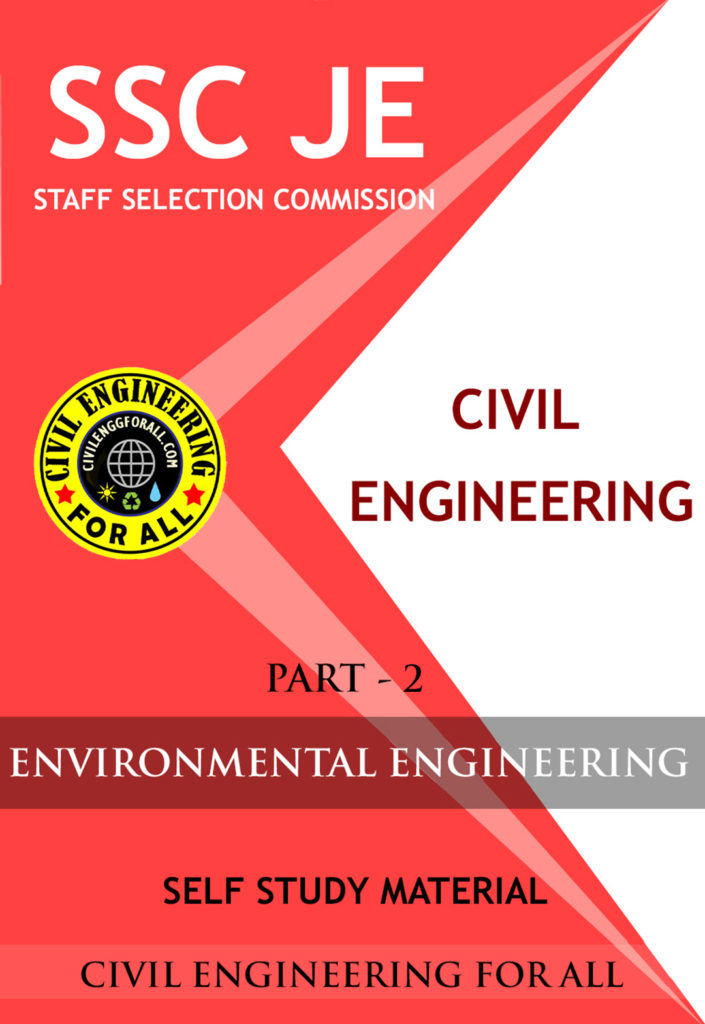
SEWAGE TREATMENT
Sewage, before being disposed off either in river streams or an land, has generally to be treated, so as to make it safe. Sewage has to be treated for the following reasons:
- To prevent pollution of water into which the sewage is let off, as water may be used downstream for drinking water supply. This causes a health hazard as sewage contains pathogenic bacteria.
- To prevent offensive odour in the water if water is used for swimming, boating, etc., and to the people living near the water or land where sewage is disposed off as it causes health hazard.
- To prevent destruction of fish and other aquatic life.
- If sewage has to be disposed of on land, soil will become sewage sick after some time and cannot take any more sewage. This creates a very messy scene at the site and produces offensive odour polluting the entire atmosphere and affecting the neighbourhood.


Septic Tanks
It may be defined as a primary sedimentation tank, with a longer detention period (12 to 36 hr.) and with extra provisions for digestion of the settled sludge. Septic tank unit is generally classified under the units which work on the principle of anaerobic decomposition. It is completely covered and provided with a high vent shaft for escape of gases. It is a horizontal continuous flow type of a sedimentation tank, directly admitted raw sewage, and removing about 60 to 70% of the dissolved matter from it. Effluent from such a tank will be sufficiently foul in nature, and will have to be disposed off either for sub-surface irrigation or in cesspools or soakpits or to be treated in trickling filter before disposed it off in water courses. These are generally provided in areas where sewers have not been laid.

Septic Tank – Design criteria
- Capacity of septic tanks = Quantity of sewage produced during detention periods + Volume of sludge for 6 months to 3 years, depending upon periodicity of cleaning. Rate of accumulation of sludge has been recommended as 30 lit./person/years. A free board of about 0.3 m. may be provided above the top sewage line in the tank.
- Inlet and outlet baffles: Inlet should penetrate by about 30 cm below the top sewage line, and the out let should penetrate to about 40% of the depth of sewage.
- Detention period: It for septic tank generally varies between 12 to 36 hr. but is commonly adopted as 24 hours.
- Length to width ratio: L/B = 2 to 3. Width should not be less than 90 cm. Depth of the tank generally ranges between 1.2 to 1.8m.
ENVIRONMENTAL ENGINEERING IES MASTER GATE STUDY MATERIAL PDF: CLICK HERE
Aerobic Biological Units
These are treatment reactors, in which organic matter decomposes (oxidised) by aerobic bacteria. These consist of following:
- Filters
- Aeration tanks
- Oxidation ponds and Aerated lagoons
Since all these aerobic units, generally make use of primary settled sewage, they are easily classified as secondary units.
Anaerobic biological Units
These are treatment reactors, in which organic matter is destroyed and stabilised by anaerobic, bacteria. These consists of following:
- Anaerobic lagoons
- Septic tanks
- Inhoff tanks
Out of these units, only an aerobic lagoons make use of primary settled sewage, and hence only they can be classified as secondary units. Thus septic tanks and inhoff tanks using raw sewage are not classified as secondary units.
Note: Sewage treatment is usually confined upto secondary treatment only.
Anaerobic Pond
In these stabilisation of waste is mainly brought about by usual anaerobic conversion of organic water to CO2, CH4, and gaseous end products, with eruption of foul odours and pungent smells.
Facultative Pond
In these, upper layers work under aerobic conditions, while anaerobic conditions prevail in the bottom layers. The upper aerobic layer of the pond acts as a good check against the evolution of the foul odours from such a pond.
ENVIRONMENTAL ENGINEERING ACE ACADEMY GATE STUDY MATERIAL PDF: CLICK HERE
Aerobic Ponds
These are practically difficult to construct and use. The facultative ponds, with depth (1 to 1.5 m.) are thus most widely used for treatment of sewage. End products of the aerobic pond are carbon dioxide, NH3 and phosphates, which are required by the algae to grow and continue to produce oxygen.
Oxidation Pond
It was originally referred to that stabilisation pond which received partially treated sewage; whereas pond that received raw sewage was called sewage lagoon. Oxidation pond has been widely used as a collective term for all types of ponds, and most particularly the facultative stabilisation ponds. Effluents from oxidation ponds can be easily used for land irrigation, particularly at places, where they cannot be discharged into river streams
METHODS OF SLUDGE DISPOSAL
Dewatering
Digested sludge is first of all dewatered or dried up before disposal (burning or dumping).
Methods of Dewatering
- Dewatering of sludge by Sludge Drying Beds.
- Mechanical Methods of Dewatering sludge. Dried sludge from the drying beds is either use as a manure or is used for filling low lying areas.
Disposal of Raw Sludge
Disposal on Land
In this method, sewage effluent is generally disposed off by throwing it away on land. The percolating water may either raise the water table or is collected below by a system of underdrains. When sewage is applied on the ground, a part of it evaporates and remaining portion percolates through soil. Suspended particles are caught in the soil voids. If proper aeration of voids is maintained, the organic matter will get oxidised by aerobic process. But in fine grained soils like clays, pores get clogged up developing non-aerobic condition, which result in evaluation of foul gases and clogging makes the area water logged causing problem of mosquito breading. Application of the sludge sewage will also have some problem, hence primary treatment is necessary before land disposal.
ENVIRONMENTAL ENGINEERING MADE EASY GATE NOTES PDF: CLICK HERE
Sewage Farming and Effluent Irrigation
Both these terms are synonyms and means use of sewage effluents for irrigating crops, i.e. direct application of effluent to lands. The basic difference is, in effluent irrigation main consideration is the successful disposal of sewage while in sewage farming main consideration is successful growing of crops.
Methods of Land Disposal
(i) Irrigation
It involves application of effluent to the land for treatment and meeting the growth needs of plants. Effluent is treated by physical, chemical and biological means as it seeps in to the soil. Where water for irrigation is valuable, crops can be irrigated as consumptive use rates of 2.5 to 7.5 cm/week depending on the crop and economic return from the crop.
(ii) Rapid infiltration
In this system, effluent is applied to the soil at high rates (10 to 20 cm/ week) by spreading in basins or by sprinkling. Treatment occurs as the water passes through the soil matrix. System objectives are following:
- Ground water recharge
- Natural treatment followed by pumped withdrawal or underdrain recovery.
- Natural treatment with renovated moving vertically and laterally in the soil and recharging a surface water course. Rapid infiltration is suitable for percolation rate of 6 to 25 mm/minute. The degree of water renovation by rapid infiltration is difficult to predict.
(iii) Overland Flow
It is available only for slopping sites with relatively impervious soils. It is essentially a biological treatment process in which waste water is applied over upper reaches of sloped (2 to 8%)terrain and allowed to flow across the vegetated surface to runoff collection ditches. Renovation is accomplished by physical, chemical and biological means as waste water flows in a thin sheet down the relatively impervious slope. It is suitable for percolation rate below 2mm/ min. Plant or tree cover is essential to minimize erosion and assist in nutrient removal. In this method there is difficulty in maintaining consistent quality in the runoff and site preparation. Since process is exposed to weather, biologically activity and degree of treatment are adversely affected by lack of sunshine and cold temperature.
Fundamental Considerations in Land Treatment systems
- Knowledge of waste water characteristics and treatment mechanisms.
- Vegetation and public health requirements.
- Wastewater characteristics and treatment mechanisms.
ENVIRONMENTAL ENGINEERING PART-2 STUDY MATERIAL FOR SSC JE PDF CIVILENGGFORALL
DOWNLOAD LINK : CLICK HERE
PASSWORD : CivilEnggForAll
ENVIRONMENTAL ENGINEERING SSC JE STUDY MATERIAL PART-1 : CLICK HERE
OTHER USEFUL BOOKS
- RAJASTHAN STAFF SELECTION BOARD (RSSB) JUNIOR ENGINEER DIPLOMA CIVIL ENGINEERING EXAM 2022 – HINDI & ENGLISH MEDIUM SOLVED PAPER – FREE DOWNLOAD PDF (CivilEnggForAll.com)
- ISRO TECHNICAL ASSISTANT EXAM 2022 – CIVIL ENGINEERING – HINDI & ENGLISH MEDIUM – SOLVED PAPER – FREE DOWNLOAD PDF (CivilEnggForAll.com)
- MADHYA PRADESH PUBLIC SERVICE (MPPSC) COMMISSION – ASSISTANT ENGINEER EXAM – MPPSC AE 2021 CIVIL ENGINEERING – SOLVED PAPER WITH EXPLANATIONS – PDF FREE DOWNLOAD
- BIHAR PUBLIC SERVICE COMMISSION (BPSC) ASSISTANT ENGINEER EXAM – 2022 – CIVIL ENGINEERING – SOLVED PAPER – FREE DOWNLOAD PDF (CivilEnggForAll.com)
- ODISHA PUBLIC SERVICE COMMISSION – OPSC AEE PANCHAYATI RAJ EXAM 2021 – SOLVED PAPER WITH EXPLANATION – FREE DOWNLOAD PDF

